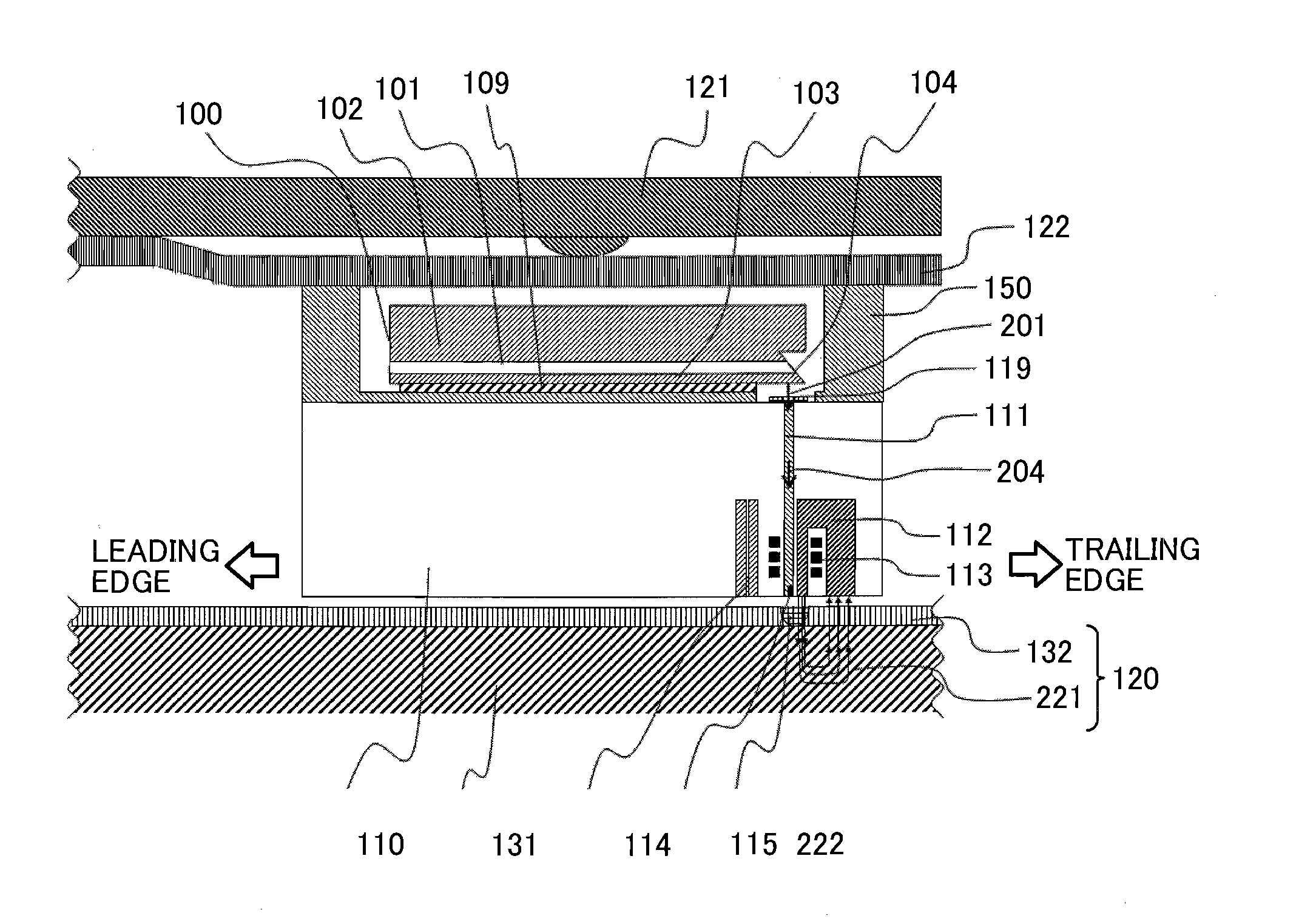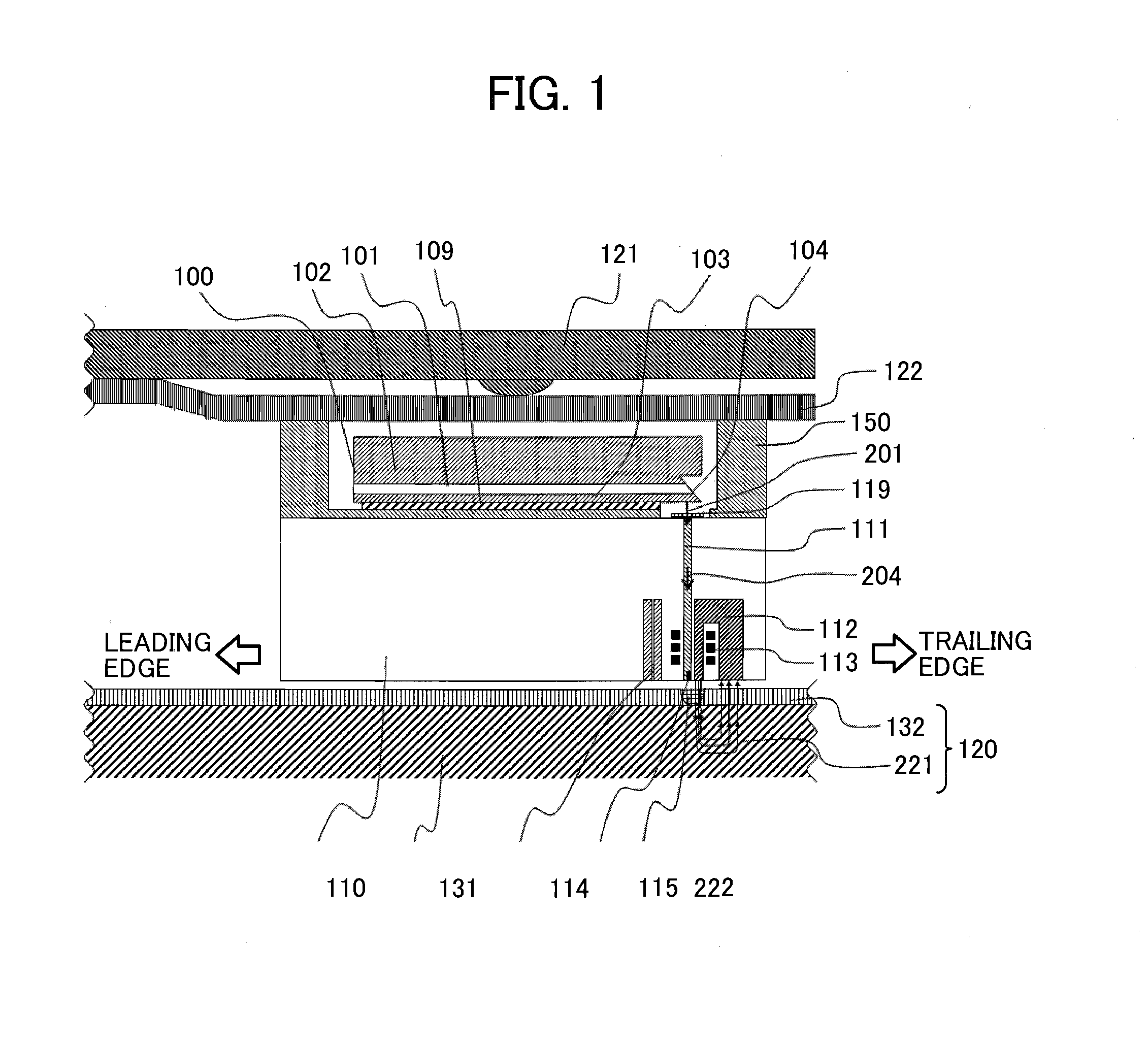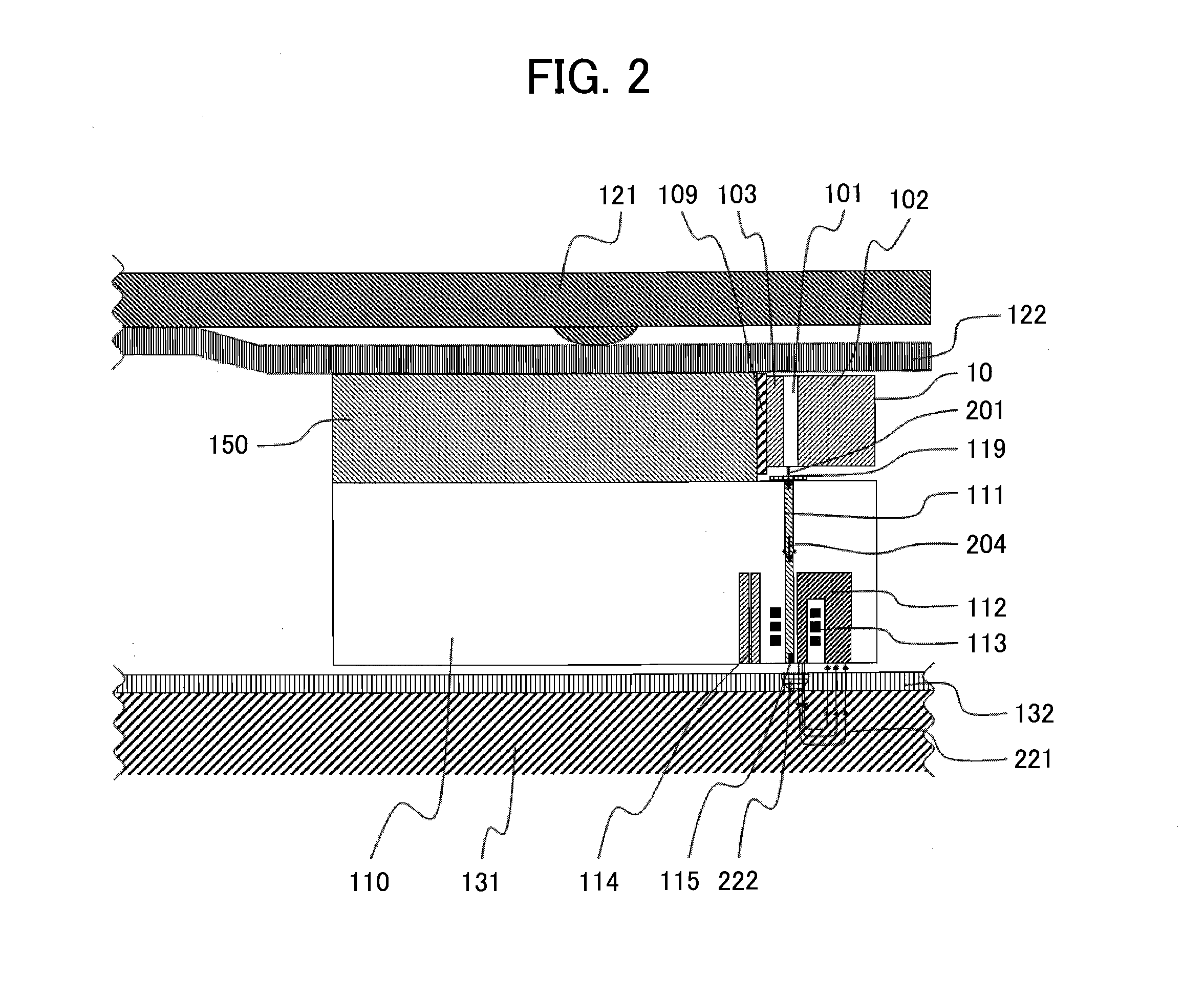Thermally-assisted recording head and magnetic recording system
a recording head and magnetic technology, applied in combination recording, data recording, instruments, etc., can solve the problems of difficult technical aspects, easy generation of optical coupling loss, and easy recording on a recording medium with high coercivity, so as to prevent the instability of propagating light, suppress the generation of stray light in the slider, and eliminate or reduce the non-propagating light
- Summary
- Abstract
- Description
- Claims
- Application Information
AI Technical Summary
Benefits of technology
Problems solved by technology
Method used
Image
Examples
first example
[0057]FIG. 10 is a schematic perspective view of an optical waveguide core and shield, a magnetic pole, a magnetizing coil, and a connecting terminal provided in a slider of a thermally-assisted magnetic recording head according to an another embodiment of the present invention. The optical waveguide core 111 is surrounded by the cladding 118. The annular light shield 300, serving as a laser beam absorber or reflector, is disposed in such a manner as to surround the periphery of the cladding 118. Also, a near-field generator 115 is disposed at a leading end of the optical waveguide core 111. The light propagating through the optical waveguide 111 is projected on the near-field generator 115 to be absorbed. A recording magnetic pole 112 is disposed in the vicinity of the near-field generator 115 to generate a recording magnetic field. The near-field light generated by the near-field generator 115 locally raises the temperature of a recording medium, and recording is performed in a th...
second example
[0060]FIG. 11 is a schematic perspective view of a magnetic disk device using a thermally-assisted magnetic recording head according to an another embodiment of the present invention.
[0061]A recording disk 402 rotates within a device case 400 with a spindle 403. An arm 405 is driven by a voice coil motor 401. A suspension 406 is attached to the arm 405. A thermally-assisted magnetic recording head 410 with the LD100 or with the LD10 mounted over the slider 110 is connected to the tip of the suspension 406.
PUM
| Property | Measurement | Unit |
|---|---|---|
| size | aaaaa | aaaaa |
| size | aaaaa | aaaaa |
| thickness | aaaaa | aaaaa |
Abstract
Description
Claims
Application Information
 Login to View More
Login to View More - R&D
- Intellectual Property
- Life Sciences
- Materials
- Tech Scout
- Unparalleled Data Quality
- Higher Quality Content
- 60% Fewer Hallucinations
Browse by: Latest US Patents, China's latest patents, Technical Efficacy Thesaurus, Application Domain, Technology Topic, Popular Technical Reports.
© 2025 PatSnap. All rights reserved.Legal|Privacy policy|Modern Slavery Act Transparency Statement|Sitemap|About US| Contact US: help@patsnap.com



